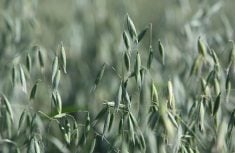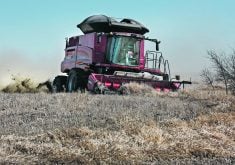Better measures of bull fertility
Scientists at the Agriculture and Agri-Food Canada Research Centre in Brandon, Man. are studying how the factors affecting reproductive efficiency are inherited in bulls and their half-sisters.
Bull reproductive performance is influenced by several factors, including testicular development and semen quality, all of which affect fertility.
Scrotal circumference was measured using a plastic-coated cloth tape at six, eight,10, 12 and 14 months of age. Semen was collected by electro-ejaculation around 13 months of age and was evaluated for motility, which is the ability to move, as well as for form and structure. The percentage of abnormal sperm included sperm heads with abnormal shape or size – called primary abnormals – and sperm with looped or coiled tails and abnormal midpieces.
Read Also

VIDEO: Ag in Motion documentary launches second season
The second season of the the Western Producer’s documentary series about Ag in Motion launched Oct. 8.
Another trait measured was the percentage of normal acrosomes – caps covering the sperm heads which help sperm to attach to and penetrate eggs and fertilize them.
Heritability estimates for scrotal circumference ranged from 42 percent at 10 months to 59 percent at 12 months. Therefore, selecting for larger testicular size at any of these ages is an effective way to predict fertility in a sire’s offspring. Heritability estimates for semen quality traits ranged from 13 percent for the primary abnormals to 45 percent for all abnormal sperm.
Results showed as scrotal circumference increased, so did the percentage of normal acrosomes, while the percentage of abnormal sperm decreased.
The findings mean these traits should be included as part of routine procedures in evaluating bull breeding soundness. The relationship between scrotal circumference and sperms’ ability to move was not as definitive. However, a larger testicular size did indicate a higher percentage of motile sperm.
The study also found a significant relationship between scrotal circumference and onset of puberty in half-sisters. Selecting bulls with larger testicular size at a young age should reduce the age of puberty in their daughters.
The optimum time to measure scrotal circumference is at 10 to 12 months of age. Collection and evaluation of semen should be performed roughly one month before the breeding season begins.
Selection of herd sires with large scrotal circumference and low incidence of sperm defects at breeding age should improve the fertility of beef bulls.
– Agriculture Canada














